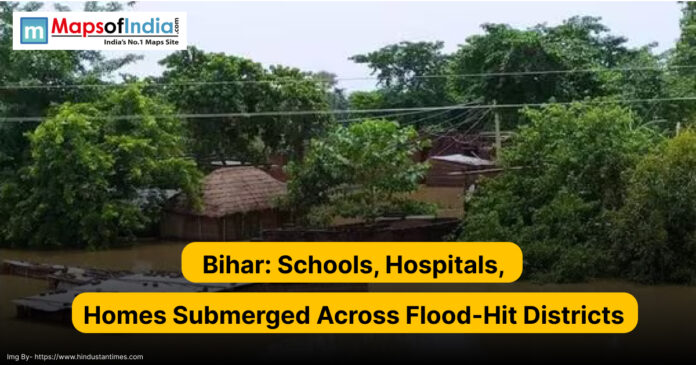There has been dire flooding with schools, hospitals, and thousands of homes partly under water as high water levels continue to rise in various districts. Monsoon rain continued to pound through days leading to rivers overflowing danger levels, submerging very large areas of land that are occupied by people, businesses and agriculture. This has made life stagnant in various towns and villages where people are unable to come to terms with the magnitude of the disaster.
In cities, classrooms and hospital rooms are submerged in water, and this has resulted in the inability to continue learning and the halting of health services offered in hospital facilities. Hospitals and healthcare facilities that are essential have minimal capacity since machinery in some of the areas is damaged by the floods, and some wards are inaccessible. Doctors and medical staff still work under unfavourable conditions, and patients in low-lying hospitals have been relocated to less risky floors or moved to other hospitals.
The residential neighbourhoods have been the most affected, where whole colonies have been drowned and homes have lost precious properties. Families have been displaced and are sheltering in their temporary relief camps that were previously established on topographically higher ground. In other parts, the height of water has been so high that the rise of water could be seen, leaving only the rooftops of one-storey houses. Good power and water supply have also aggravated the conditions of people who are affected.
Transport routes also suffer seriously where the main roads, highways and railway lines are flooded or blocked. Car parks are flooded, and cars are stalled on the streets, and transport has even been halted in most parts of the country. This has served to disable the supply of vital commodities such as food and medical equipment in flood-hit areas. Boats are being used by relief workers and the local authorities in an attempt to rescue the stranded families and extend aid.
In the countryside, arable lands are flooded, and there are fears of huge losses to crops. This has left farmers afraid that they will lose their standing paddy and maize crops as well as their vegetable farms, whose effects will be felt in the coming months as regards to livelihoods. The livestock have also been hit, most of which were swept away or left without shelter and fodder.
The authorities have been on high alert because the level of water in the main rivers keeps increasing. Evacuation has been in progress, and disaster response units are operating around the clock to evacuate stranded people. Mobile kitchens have been established to feed the displaced families, and health teams have been put on alert against the outbreak of water-borne illnesses.
There is tension because predictions suggest that there may be more rain. Inhabitants in areas that are prone to flooding have been advised to be watchful, not go into flood-affected areas and heed safety reminders until the situation becomes normal. At the moment, extensive areas of the state are left at the mercy of the monsoon, which has its merciless power in vain.










